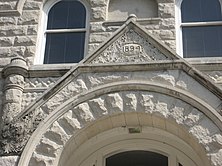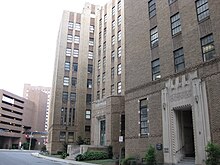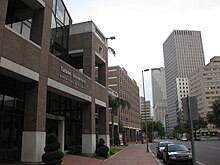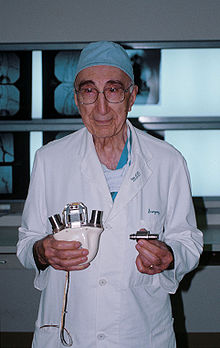
Michael Ellis DeBakey was an American general and cardiovascular surgeon, scientist and medical educator who became Chairman of the Department of Surgery, President, and Chancellor of Baylor College of Medicine at the Texas Medical Center in Houston, Texas. His career spanned nearly eight decades.

The Columbia University Roy and Diana Vagelos College of Physicians and Surgeons (VP&S) is the medical school of Columbia University, located at the Columbia University Irving Medical Center in the Washington Heights neighborhood of Manhattan.
Alton Ochsner Sr. was an American surgeon and medical researcher who worked at Tulane University and other New Orleans hospitals before he established The Ochsner Clinic. Now known as Ochsner Medical Center, the clinic is the flagship hospital of Ochsner Health System. Among its many services are heart transplants.
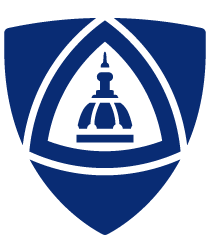
The Johns Hopkins University School of Medicine (JHUSOM) is the medical school of Johns Hopkins University, a private research university in Baltimore, Maryland. Founded in 1893, the School of Medicine shares a campus with Johns Hopkins Hospital and Johns Hopkins Children's Center, established in 1889.
The University of Illinois College of Medicine offers a four-year program leading to the MD degree at four different sites in Illinois: Chicago, Peoria, Rockford, and formerly Urbana–Champaign. The Urbana–Champaign site stopped accepting new students after Fall 2016 to make room for the newly established Carle Illinois College of Medicine.
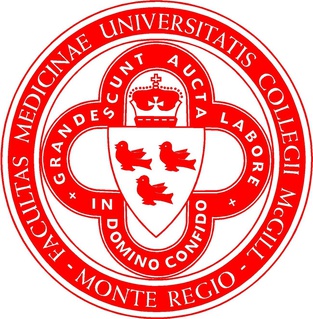
The Faculty of Medicine and Health Sciences is one of the constituent faculties of McGill University. It was established in 1829 after the Montreal Medical Institution was incorporated into McGill College as the college's first faculty; it was the first medical faculty to be established in Canada. The Faculty awarded McGill's first degree, and Canada's first medical degree to William Leslie Logie in 1833.

The University of Alabama at Birmingham Marnix E. Heersink School of Medicine is a public medical school located in Birmingham, Alabama, United States with branch campuses in Huntsville, Montgomery, and at the University of Alabama College of Community Health Sciences in Tuscaloosa. Residency programs are also located in Selma, Huntsville and Montgomery. It is part of the University of Alabama at Birmingham (UAB).

The Louisiana State University Health Sciences Center New Orleans is a public university focused on the health sciences and located in New Orleans, Louisiana. It is part of the LSU System and is the home of six schools, 12 Centers of Excellence, and two patient care clinics. Due to Hurricane Katrina, the School of Dentistry was temporarily located in Baton Rouge but has since returned to its campus in New Orleans. As a public university, it mostly accepts residents of the state of Louisiana with the exception of combined M.D./Ph.D. students and also children of alumni.

Charity Hospital was one of two teaching hospitals which were part of the Medical Center of Louisiana at New Orleans (MCLNO), the other being University Hospital. Three weeks after the events of Hurricane Katrina, then-Governor Kathleen Blanco said that Charity Hospital would not reopen as a functioning hospital. The Louisiana State University System, which owns the building, stated that it had no plans to reopen the hospital in its original location. It chose to incorporate Charity Hospital into the city's new medical center in the lower Mid-City neighborhood. The new hospital completed in August 2015 was named University Medical Center New Orleans.

The State University of New York Upstate Medical University is a public medical school in Syracuse, New York. Founded in 1834, Upstate is the 15th oldest medical school in the United States and is the only medical school in Central New York. The university is part of the State University of New York (SUNY) system.

Rudolph Matas was an American surgeon. He was born outside New Orleans in St. Charles Parish, Louisiana, and spent much of his childhood in his parents' native land of Spain. Matas returned to New Orleans in 1877 to begin his medical training at the Medical School of the University of Louisiana, which is now known as Tulane University School of Medicine. He received his medical degree in 1880, at the age of 19.

The Tulane School of Public Health and Tropical Medicine is part of Tulane University, located in New Orleans, in the U.S. state of Louisiana.

The University of Utah School of Medicine is located on the upper campus of the University of Utah in Salt Lake City, Utah. It was founded in 1905 and is currently the only MD-granting medical school in the state of Utah.
Healthcare in New Orleans includes a combination of hospitals, clinics, and other organization for the residents of New Orleans, Louisiana.
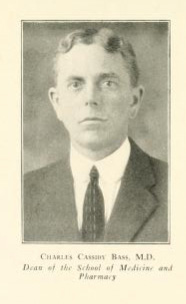
Charles Cassidy Bass was an American medical doctor and researcher on tropical medicine who made significant contributions to understanding malaria, hookworm, and other diseases. Later Bass studied the relationship between dental health and general well-being. Bass articulated and promoted the "Bass Technique of Toothbrushing" and developed improved means of flossing teeth, for which some refer to Bass as "The Father of Preventive Dentistry". He subsequently became a university administrator, serving as dean of the Tulane University School of Medicine, from 1922 to 1940.

Louisiana State University Health Sciences Center Shreveport is a public university focused on the health sciences and located in Shreveport, Louisiana. It is part of the LSU System and is composed of three different schools: the School of Medicine, School of Graduate Studies, and School of Allied Health Professions. The School of Medicine offers the Doctor of Medicine degree, while both the Schools of Graduate Studies and Allied Health offer Bachelor's degrees, Master's degrees, and Doctorate degrees. The Ochsner-LSU Health Hospital also offers 18 residency programs and 15 fellowships.
John C. McDonald, M.D. was an American surgeon and educator distinguished in the field of organ transplantation.
John Adriani was an American anesthesiologist and director of anesthesiology at Charity Hospital in New Orleans. He was president of the American Board of Anesthesiology (ABA) and he received a Distinguished Service Award from the American Society of Anesthesiologists (ASA). He was an early supporter of physician involvement in nurse anesthetist training.
Edward Sander Connolly Jr. is an American neurosurgeon.
